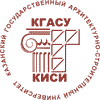About the authors
| First name, Middle name, Last name, Scientific degree, Scientific rank, Current position. Full and brief name of the organization, The organization address. | Nikolay I. Karpenko, Doctor of Technical Sciences, Professor, Academician of the Russian Academy of Architecture and Construction Sciences, Chief Researcher, Research Institute of Building Physics of the Russian Academy of Architecture and Construction Sciences, Moscow, Russian Federation E-mail: This e-mail address is being protected from spambots. You need JavaScript enabled to view it , ORCID: 0000-0001-9307-7952 Vladimir I. Korsun, Doctor of Technical Sciences, Professor, Corresponding Member of the Russian Academy of Architecture and Construction Sciences, Chief Researcher, Research Institute of Building Physics of the Russian Academy of Architecture and Construction Sciences, Moscow, Russian Federation E-mail: This e-mail address is being protected from spambots. You need JavaScript enabled to view it , ORCID: 0000-0002-9445-5027 Georgy A. Moiseenko, Candidate of Technical Sciences, Researcher, Research Institute of Building Physics of the Russian Academy of Architecture and Construction Sciences, Moscow, Russian Federation E-mail: This e-mail address is being protected from spambots. You need JavaScript enabled to view it , ORCID: 0000-0002-5080-116Х |
| Title of the article | The influence of elevated temperatures up to +300°C on concrete deformation diagrams |
| Abstract. | The relevance of research. The diagrammatic method of calculating structures, based on the introduction of real deformation diagrams of the materials used, allows for the most accurate description of the stress-strain state of reinforced concrete under various types of force effects. This method involves the use of curvilinear graphs of concrete deformation, as well as nonlinear diagrams of reinforcement deformation with or without a yield point. In this case, force loading under heating conditions significantly changes the initial deformation diagrams of the material, which must be taken into account in their analytical modeling. The purpose of the article is to provide a way to transform diagrams of concrete deformation under loading under normal environmental conditions into diagrams taking into account heating and humidification. The research objectives include a description of the initial characteristics of diagrams under heating conditions and the proposal of a mathematical apparatus for theoretical modeling of diagrams. The results of the study. The nature of the influence of various heating modes on the compression and tension diagrams of B50 class concrete was revealed. The initial characteristics for constructing diagrams are adopted in accordance with the normative literature. Conclusions. The proposed method for accounting for temperature conditions was developed with the possibility of integrating it into a diagrammatic calculation method for concrete and reinforced concrete structures. This method is the most accurate in modern design practice, making this study significant for the construction industry. |
| Keywords. | concrete, temperature effects, diagrams of concrete deformation under compression and tension, ascending and descending sections of diagrams, diagrammatic calculation method |
| For citations: | Karpenko N.I., Korsun V.I., Moiseenko G.A. The influence of elevated temperatures up to +300°C on concrete deformation diagrams // News of KSUAE, 2025, № 3 (73), p. 251-260, DOI: 10.48612/NewsKSUAE/73.20, EDN: TKPWPT |
















